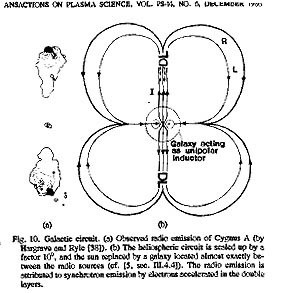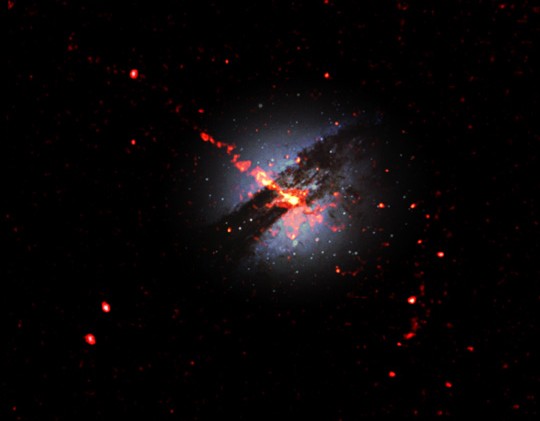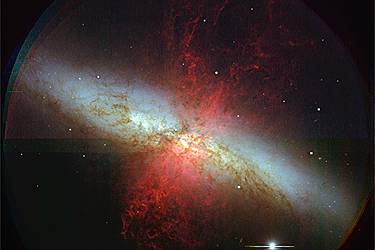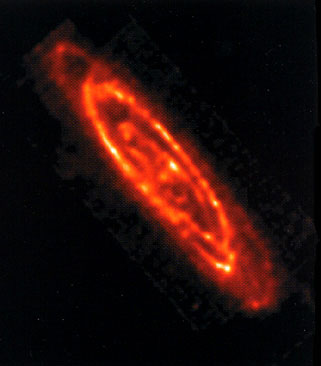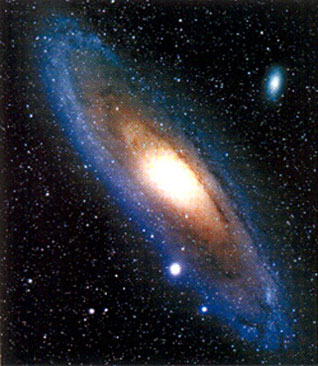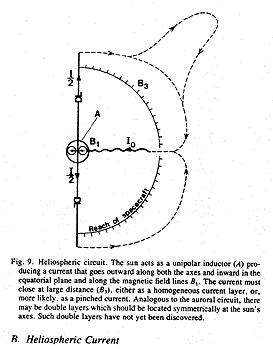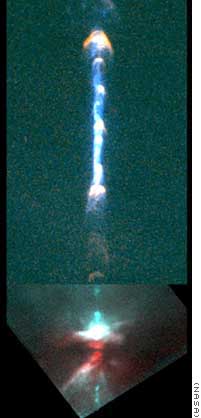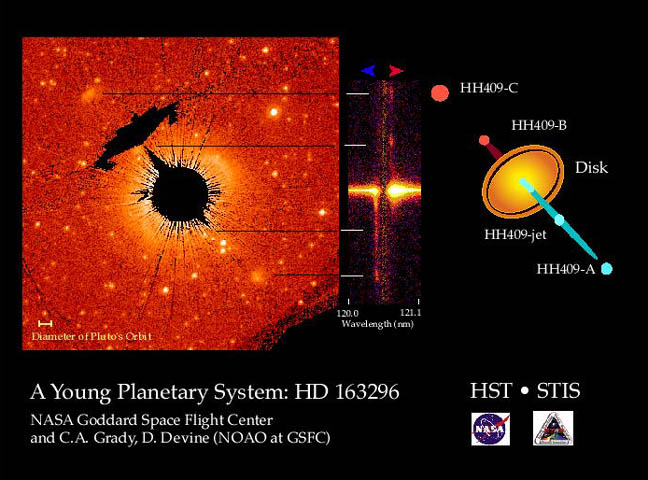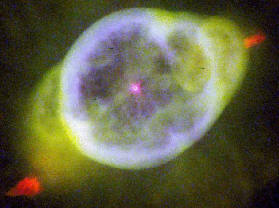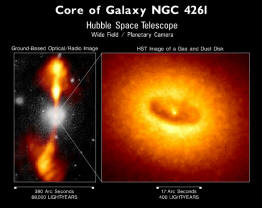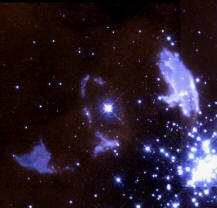|
The shape that characterizes most galaxies was first described by Hannes Alfven in 1981.
The shape he proposed is shown here. This diagram is a vertical cross section of a three dimensional figure. The horizontal line at the center of the diagram is actually a circular disk lying in the horizontal plane. It is this disk, when viewed not from the edge as it is here, but more face on, that is the familiar spiral shape picture of a galaxy that we are used to seeing.
The parallel
vertical lines coming out from the center of the galaxy (along its
axis of rotation) represent a strong electrical current in a plasma
that sometimes is visible as a "jet".
These are due to the presence of DLs. In some galaxies the jet plasma is in the dark current mode; in others it is clearly visible.
This is Centaurus A
(above). The jet is clearly visible in this image. Halton Arp's contention that quasars are emitted from the centers of
Seyfert galaxies along their 'secondary axes' (axes of rotation) is
supported by these pictures. Recall that DLs are also the locations
of strong electromagnetic z-pinches which can compress dispersed
material into denser objects.
In many galaxies the jet structure cannot be seen in visible light. So until the development of infrared and x-ray orbiting satellite telescopes, most of these features remained undiscovered. There are now many images of galaxies that show the Alfven structure. The image at the right was taken by the Subaru orbiting IR telescope of galaxy M 82.
Even our neighboring Andromeda galaxy, M 31, shows the disk like structure of the homopolar motor-generator morphology. Below on the right is a normal, visible light photograph of M 31.
Below on the left is an image of that same object obtained by the Infrared Space Observatory (ISO) operated by ESA.
But Alfven also proposed that individual stars themselves had similar morphologies. He proposed an almost identical diagram for the operation of a typical star. Once again the plasmas involved may or may not all be in one of the visible modes of operation. So not all images of stars show this structure - but many do. Alfven's heliospheric circuit is shown here.
Because our Sun is a typical star, this diagram would apply equally well to it.
This proposal remained in the realm of conjecture until the spring of the year 2001 when the spacecraft Ulysses discovered long plasma 'tubes' emanating from the bottom pole of our Sun. These tubes are long enough to extend out farther than the distance of the orbit of Mars from the Sun. There are also many images available now of individual 'jetted stars'. Of course, Alfven believed all stars were jetted - but some less visibly than others.
Below are a pair of images of stars that show the plasma jets and characteristic disk shape clearly.
Notice in the right hand image (Goddard Space Flight Center) that
the 'planets' (Herbig-Haro objects) are formed in a collinear array
along the jet axis of the parent star. These clumpings are probably
formed by DLs at those locations. In the center image (above) the
tell-tale twisting shape of a large Birkeland current containing DLs
is clearly visible. Dr. Anthony Peratt points out that the number of
objects typically formed by the z-pinch effect is usually around
nine.
All the images shown below are of stars. All exhibit the homopolar disk shape.
|
